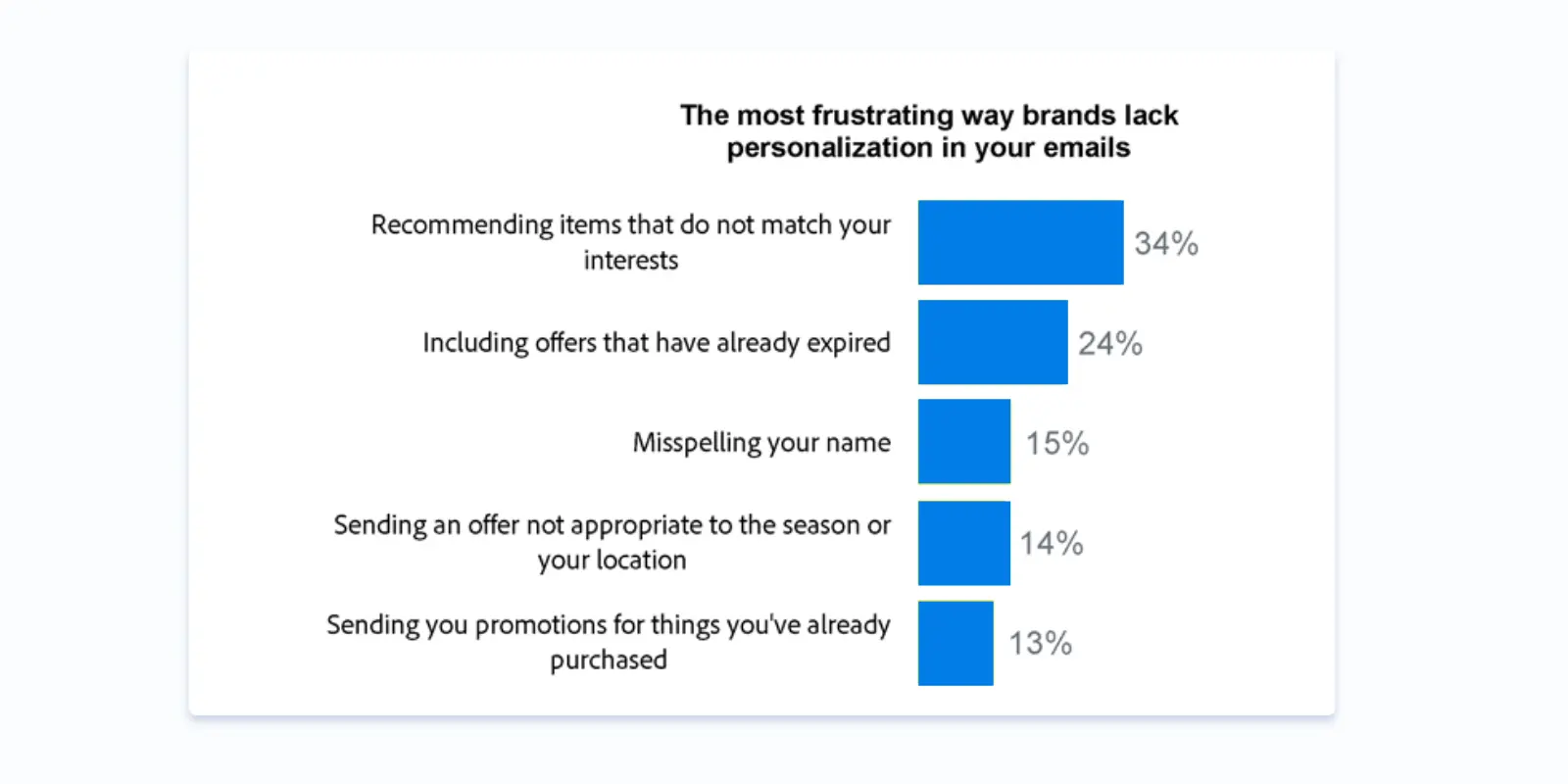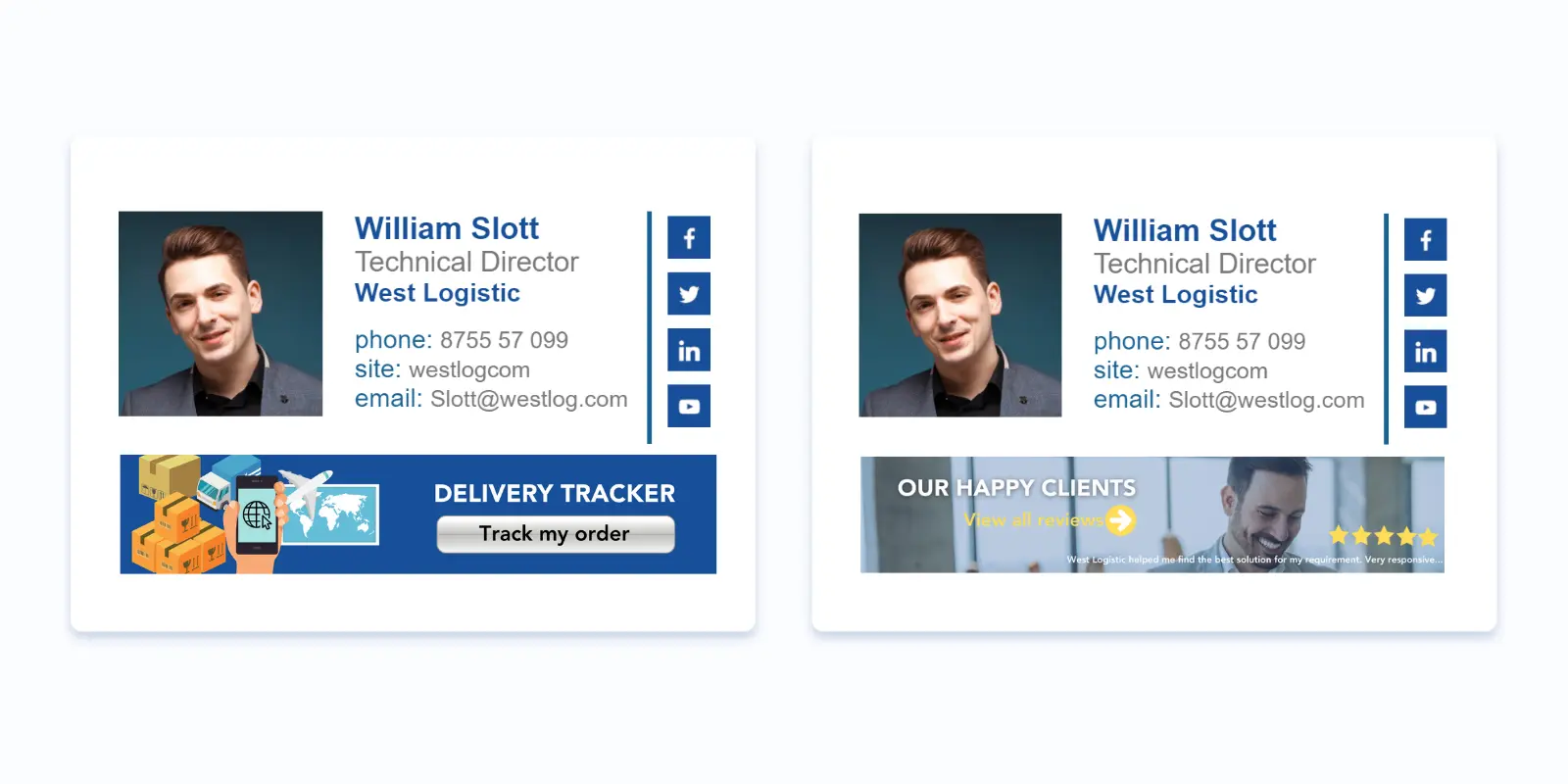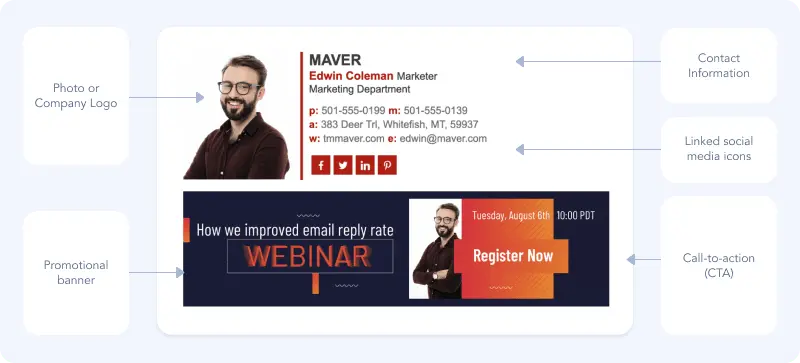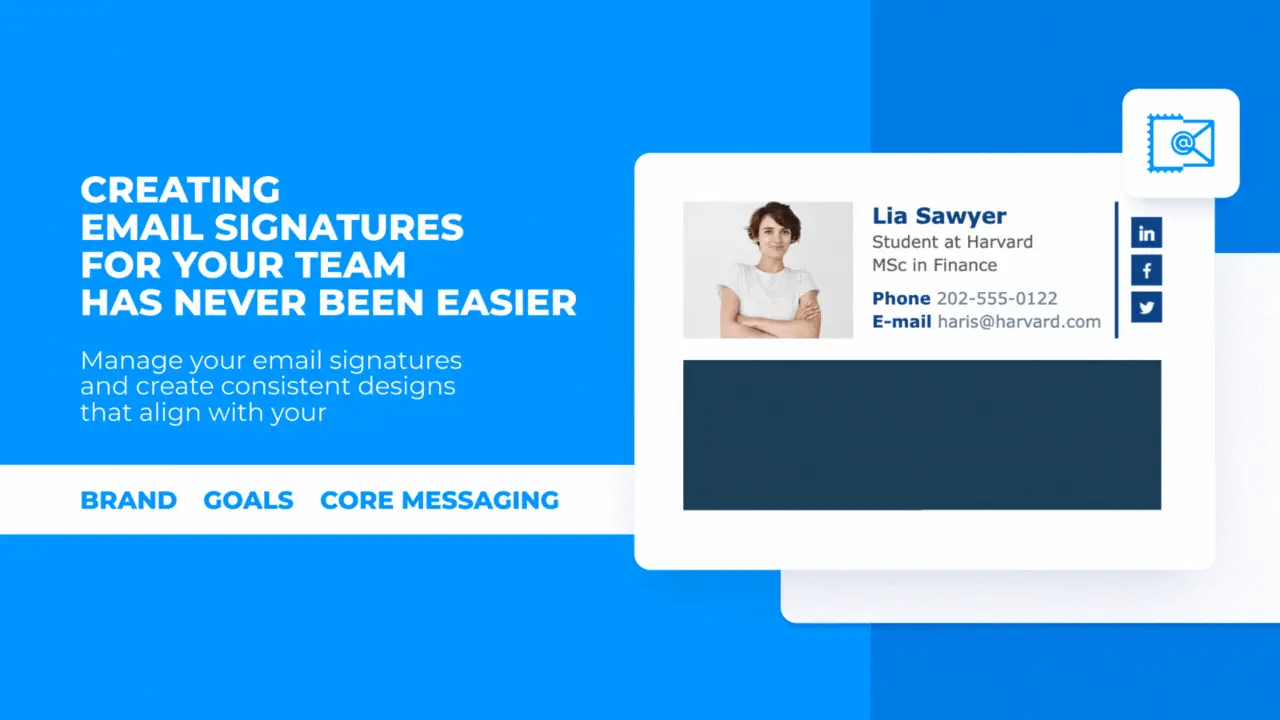The Ultimate Guide to Creating Cold Email Marketing Campaigns
1. Set up a cold email campaign
2. Measuring success and ROI
Email remains the primary communication channel for businesses worldwide. Most respondents still use email to interact with customers (66%) and colleagues (47%).
And because email is such a popular communication method, it makes sense that it would work exceptionally well as a prospecting and lead-generation tool. That's why cold email marketing campaigns can be the perfect way to get in front of your best customers and offer services you know they can benefit from.
But how to send a cold email that generates a response? What are the best practices of cold email prospecting? And what's a reasonable open rate for email you should expect in these campaigns?
In this comprehensive email guide, I'll answer all these and many other questions, giving you a solid understanding of how to start an email campaign to drive business growth.
Set Up a Cold Email Campaign
Setting up a successful cold email marketing campaign involves much more than typing in an email address, creating a message, and hitting send. If you want to achieve consistent results, you need to think about where your emails will be sent from, who they will reach, when you're sending them, and countless other details that will play a vital role in your success.
Let's explore the main steps in launching successful cold email campaigns that you can scale and improve.
Email Configuration
Before sending emails, you must figure out the technical email configuration to ensure they are delivered successfully. That includes setting up a domain to protect your main website and creating a sender name that will appear in the emails.
- Use a Different Domain. One of the worst things that could happen is your domain getting blacklisted because of spam complaints. To avoid that, set up a new domain and mailbox that you will use for sending cold emails. It will protect your primary domain and allow you to separate regular email communications from your cold email marketing campaigns.
- Create a Trustworthy Sender Name. Your sender name is vital to your email's perception and whether it gets past spam filters. When representing a business, you should avoid using a person's name, as that can be perceived as deceptive. A popular alternative is to use a first name and a company name, such as "[Name] at [Company]."
- Warm Up the Email Address. To further increase the likelihood of the emails reaching their recipients, you should warm up your new domain name and email address. That means starting with just a few emails and getting responses from your recipients. Then, you can gradually increase the number of emails, slowly incorporating cold email addresses that you want to reach out to.
Prospect Base
Every cold email marketing campaign requires a high-quality prospect base to send emails to. Getting people to respond to unsolicited emails is challenging enough as is, so you at least want to make sure that the prospects you're emailing are likely to be interested in what you offer.
- Compile a List of Quality Prospects. The first step of the process is identifying who you want to target. Compile a cold email list of companies and their contact details that match the criteria of high-quality leads for your business. Start by clearly establishing who your ideal client is and writing down what would qualify them to be worth pursuing. Then, compile a list of prospects you will reach out to, adding essential information such as the business name, details, and contact information. Make sure your cold email legal approach is followed by including an option to unsubscribe and respecting privacy laws.
- Verify the Prospects' Email Addresses. The only way to execute a successful cold email marketing campaign is to ensure that your emails reach the intended recipient. And that's why it's crucial to verify the prospects' email addresses before sending cold emails. You can use DNS lookup to check the domain, send an email from a different address, or use an email verifier to determine if an email address is valid and authentic. You can also rely on tools like Hunter.io to find company email addresses and verify that the ones you have are correct.
- Segment Your List of Prospects. Creating personalized messages is a vital part of succeeding with cold outreach. Segment your list of prospects based on the type of solution you're providing or the problems they are likely facing. You can then create better-targeted campaigns and emphasize different points for maximum impact.
Killer Email Copy Tips to Follow
There will always be a certain level of resistance when receiving an unsolicited email. Even if your email is actually helpful and provides a valuable proposal, the initial reaction to getting an email from an unknown sender will likely be negative. Therefore, you must be deliberate about overcoming the initial skepticism, turning it into curiosity and interest.

- Personalize Your Cold Emails. Personalizing your emails is one of the best ways to build initial trust and separate yourself from the countless spammers that try to reach your prospect's inbox. Some of the best personalization examples include adding a name, segmenting your list, and getting to know each prospect so you can include information about their business or unique needs.
- Avoid Spam-Trigger Words. There are certain words in emails that can trigger a spam filter. As you're already sending an email to someone you don't have an established relationship with, you should avoid certain groups of spam words, which will help you protect your emails from the spam folder and increase deliverability.
- Limit the Number of Images and Links. Each additional element in your email can increase the likelihood of the email not getting delivered. What's more, when you're sending a cold email, you want to make it as trustworthy and natural as possible, which means that images and links should be kept to a minimum. Ideally, send a plain-text email with a single link you want the recipient to click.
- Proofread Your Emails. Making a good first impression is a crucial part of getting taken seriously. Thoroughly proofread your emails to avoid silly mistakes and increase the chances of being considered. Even a single mistake can sway a person's opinion on whether to work with you, especially when you don't yet have a relationship.
- Use Cold Email Templates. Writing a cold email from scratch can be a big challenge. Luckily, there are many proven cold email outreach templates that you can use as a starting point, personalizing them to match your goals and the person you're reaching out to.
Optimize the Body Copy to Get Noticed
-
Create Compelling Subject Lines. The quality of your email body copy will only matter if your email gets opened. And for that to happen, you need to make a strong impression from the first word the recipient sees. Luckily, there are many ways to get your email subject lines to stand out from the crowd and create curiosity that will get your message read.
-
Use Emojis. When writing eye-catching email subject lines, you need to think in terms of visuals and ways to stand out in an inbox. Emojis can be an effective tool for getting someone to notice your emails, as long as you use them sparingly and follow the subject line best practices.
- Create a Relevant CTA. You can't expect the recipient of a cold email to spend much time on your email. That's why you should focus on creating a compelling and personalized CTA that clearly states what they should do. Whether you want them to reply right now, click a link to learn more, book a call, or anything else, make sure you consider the five vital CTA elements and personalize them accordingly.

- Implement an Email Signature. A professional email signature can be the driving force behind your outreach campaign's performance. It can make your emails seem more professional and act as a powerful call to action that gets the prospect to respond in the way that you want them to. When getting started, check out some of the best email signature examples to gain inspiration and develop a signature that matches your brand, goals, and audience.

Sending Options
When you start writing cold emails, you can get by manually sending messages and follow-ups from your email client. But at the same time, you want to consider your options for automating some of the processes. You should also figure out if your provider has any sending limits that you need to account for.
- Email Provider Sending Limits. Most people who use email for communications don't even consider that there's a limit to how many emails they can send out in a day. But the fact is, most email service providers have daily limits to prevent the inboxes from being used for mass spam emails. For instance, with a personal Gmail account, the maximum is 500 emails per day from the browser. But if you use Google Workspace, that number increases to 2000 daily messages.
- Set Up Follow-Ups. Following up is an essential part of succeeding with cold outreach marketing. If you want to increase the chances of getting a response or closing the deal, you need to be persistent and remind the prospect why you want to hear from them. When you track your emails, you can set up follow-ups for different situations, such as when they didn't open, opened but didn't click, or opened and clicked your link but didn't respond.
- Schedule Campaigns. Modern email management tools have many powerful features, such as scheduling messages to go out in advance on a specific day and time. You should utilize the opportunity and split-test various times during the day for sending emails. Some research suggests that the best time to send a cold email is in the morning, between 9 a.m. and 11 a.m, but it's better not to rely on assumptions and discover what works best in your situation.
Measuring Success and ROI

Succeeding with cold email marketing can be challenging. Even though you can expect some responses initially, the only way to make cold email a big part of your lead generation efforts is to continually look for ways to improve. And to make that happen, you need to measure the most critical success and ROI metrics that will show you what's working and what you need to change.
Here's a list of the most crucial metrics you should be tracking.
Email-Generated Sales
Putting together effective cold email campaigns takes time and effort. Because of that, you want to make sure your efforts are paying off and you're getting sales that are helping to grow your business. To learn if that's the case, you need to have a way to measure email-generated sales apart from your overall sales. You can do that by manually tracking conversions from the email conversations with clients, or you can set up a tracking link for the call-to-action (CTA), tagging leads that schedule a call, start their trial, or purchase.
Conversion Rate
While sales are the ultimate target of any cold email campaign, you may choose to measure other conversions, such as subscriptions or calls as well. Knowing how many people are responding to your cold emails is also helpful, as you can understand what tactics are effective at getting your email links clicked.
Click-Through Rate
In most cold-email campaigns, the main goal is to get the recipient to click your link. The number of people who click the link you share in the email is the best measure of whether a person is interested in what you offer. Knowing your click-through rate (CTR), you can test different approaches to see which call-to-actions are the most effective with your audience.
Engagement
Engagement in cold email marketing is measured through a combination of email open rates and click-through rates. These two metrics are an easy and reliable way to know whether the person was curious enough to open your email in the first place and if they were interested enough to click through and check out your offer on your website. Generating interest when sending cold emails is challenging, so measuring performance and making changes according to insights is the only way to make gradual improvements.
Lead Acceleration
Lead acceleration measures how fast you can move your leads down your funnel. Ensuring your lead acceleration is acceptable is crucial if you don't want to lose opportunities because you can't engage your leads fast enough. The good news with cold email is that it directly engages your prospects, giving you more control over how quickly you respond based on their interest and preferences.
Overall Revenue
If you want to see the value your cold email marketing campaigns add to your business, it's a good idea to measure the revenue it generates compared to your overall marketing efforts. That way, you can see whether it's worth scaling your cold email campaigns and reducing the money you spend in other avenues, especially if you see that cold email is generating better results for the amount of money you invest. Because sending cold emails is one of the most affordable and cost-effective methods of growing your business, seeing its full impact and results can help make it easier to focus your efforts.
Website Traffic
At the same time, you should measure how much cold emails can increase your website's traffic. You may not even consider that the leads from your emails could be subscribing to your lists, buying your products, and becoming engaged with your website. But all these additional benefits of sending cold emails make a strong case for using the strategy more extensively.
Bottom Line
Cold email marketing has been around for a long time. It's one of the most cost-effective and fastest ways of generating new, high-quality leads for your business, even if you don't yet have any customers or an established reputation in your market. Our report dives into email marketing statistics, revealing that while only 3.9% convert very frequently, strategic cold emails can still be a powerful tool.
In this article, I went through some of the main cold email marketing components you should be aware of, which should help you get your emails delivered and increase the chances of them getting opened and read.
If you want a quick and highly effective way to enhance your cold email marketing campaigns, you should utilize professional email signatures in every message you send. Sign up or request a demo to get started today!




